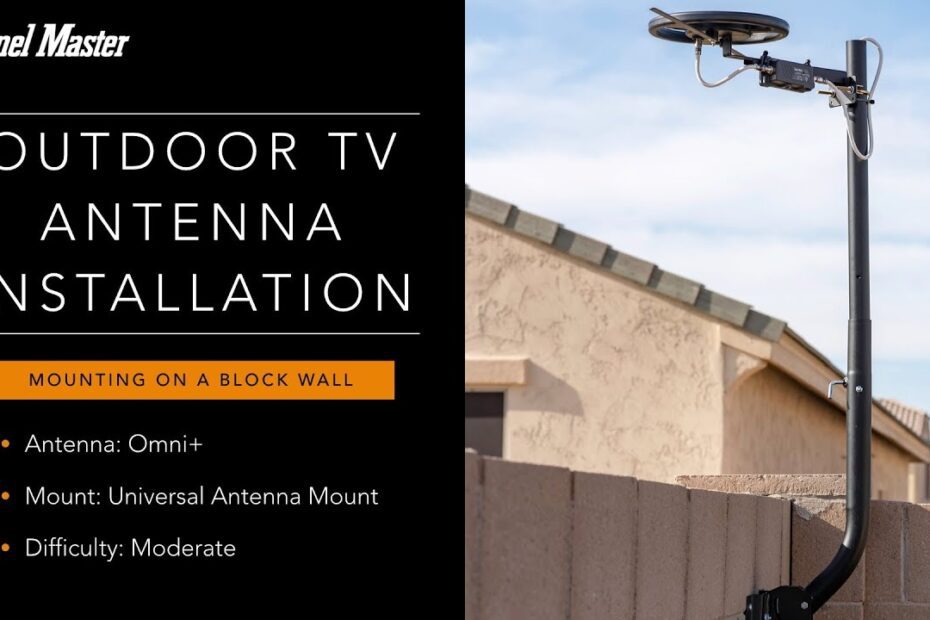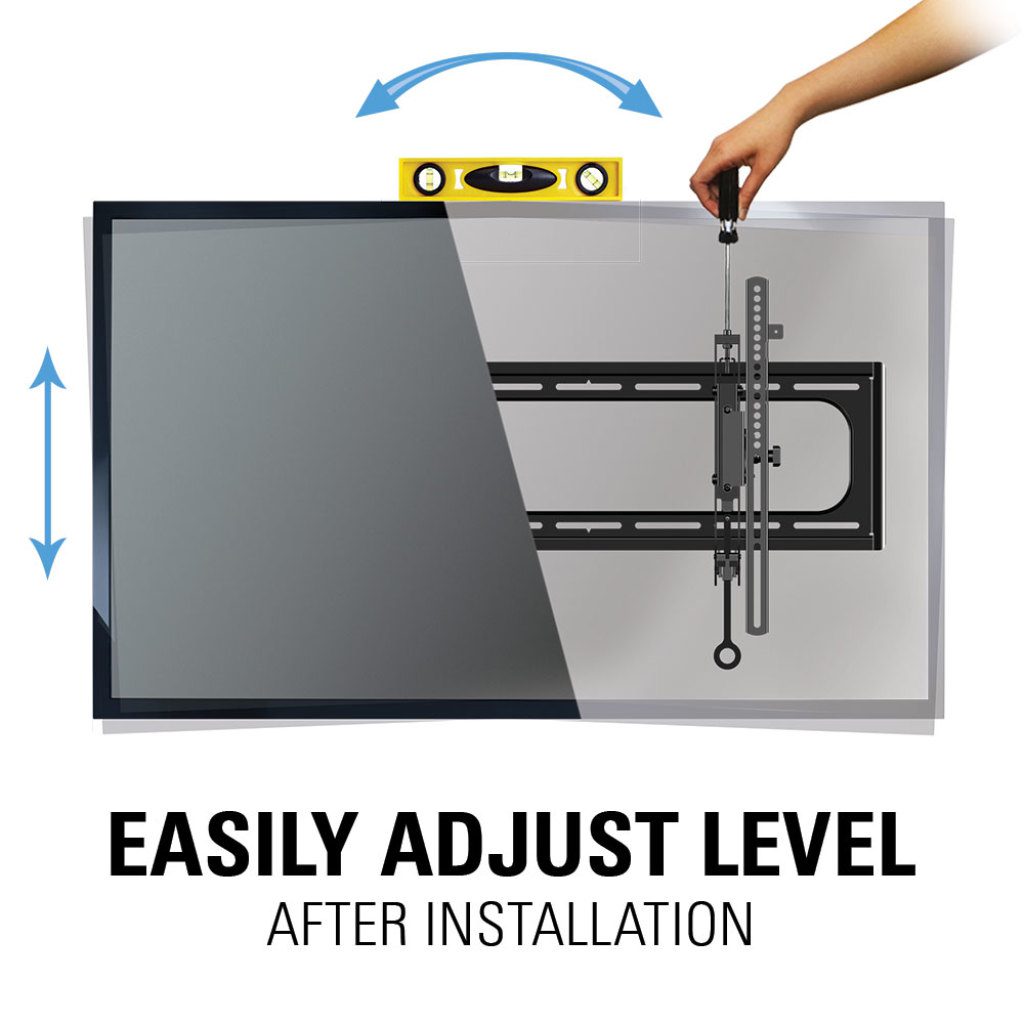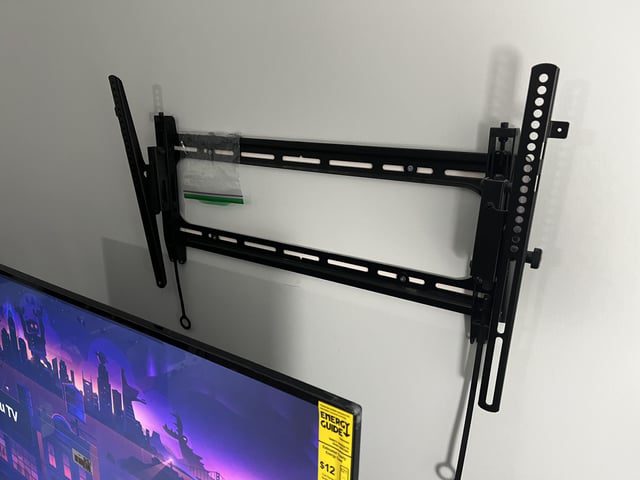To install an outdoor antenna, first, locate a suitable mounting location with a clear line of sight to broadcast towers. Then, secure the antenna to the chosen location following the manufacturer’s instructions for proper installation.
Installing an outdoor antenna is an efficient way to enhance your television reception and access a wider range of channels. Whether you’re a cord-cutter or simply want to improve your current antenna setup, a properly installed outdoor antenna can make a significant difference.
In this guide, we will walk you through the process of installing an outdoor antenna step-by-step, ensuring a successful setup and optimal signal reception. By following these instructions and considering a few important factors, you’ll be able to enjoy reliable and clear television signals in no time. So, let’s get started with the installation process for your outdoor antenna.
Choosing The Right Antenna
Installing an outdoor antenna can greatly improve your TV reception, providing you with access to a wide range of channels and programming. However, not all antennas are created equal. To ensure that you choose the right antenna for your needs, there are a few factors to consider. In this section, we’ll explore how to make the best decision when selecting an outdoor antenna.
Consider Your Location
When choosing an outdoor antenna, it’s important to consider your location. Different areas have varying levels of signal strength, which can affect the performance of your antenna. Before making a purchase, it’s a good idea to consult an online signal strength map or speak with a local antenna expert to determine the signal conditions in your area.
Determine Your Needs And Goals
Before you buy an outdoor antenna, take a moment to determine your needs and goals. Are you looking to receive a specific set of channels or do you want access to a wide range of programming? Do you live in a suburban area where signal interference may be an issue, or are you in a rural location with a greater distance to the broadcast towers?
By answering these questions, you can gain a clearer understanding of the type of antenna that would be best suited for your specific situation. For example, if you’re located far away from the broadcast towers, you may require a long-range antenna with a high dB gain. Alternatively, if you live in an urban area with signal obstructions, you might consider a multi-directional antenna that can capture signals from various angles.
To make this decision easier, consider making a list of your desired channels and factor in your signal conditions. This will help you determine which type of antenna will give you the best chance of successfully receiving and enjoying the programming you desire.
Once you have considered your location and determined your needs and goals, you will be better equipped to select the right outdoor antenna. Remember, investing a little time and effort into choosing the right antenna can ensure that you have optimal TV reception and access to the channels and programming that matter most to you.
Gathering The Necessary Tools And Equipment
Before you begin installing an outdoor antenna, it’s crucial to gather all the necessary tools and equipment to ensure a smooth and successful installation process. Having the right tools on hand will save you time and frustration, ensuring that your antenna is installed correctly.
Antenna
The antenna itself is the central component of your outdoor antenna system. It captures the TV signals and transmits them to your television. When selecting an antenna, consider factors such as range, signal strength, and the type of channels you want to receive. Different antennas may be suitable for urban or rural areas, so choose one that fits your location.
Coaxial Cable
A high-quality coaxial cable is essential for connecting your antenna to your television. Coaxial cables transmit the TV signals from the antenna to your TV set. When choosing a coaxial cable, opt for one that is designed for outdoor use and has proper shielding to minimize signal loss and interference.
Mast Or Mounting Bracket
To securely mount the antenna outdoors, you’ll need a mast or a mounting bracket. A mast is a long pole that supports the antenna and raises it above any obstructions. Make sure the mast is sturdy and can withstand any weather conditions in your area. Alternatively, a mounting bracket can be attached to the side of your house or roof to hold the antenna securely.
Connectors And Adapters
Connectors and adapters are needed to properly connect the coaxial cable to both the antenna and your TV. These small but essential components ensure a solid connection, minimizing signal loss. Common connectors include F-type connectors and BNC connectors, while adapters may be required if your antenna or TV has a different type of connector.
Grounding Kit
Grounding your outdoor antenna is crucial for safety and to protect against electrical surges. A grounding kit includes all the necessary components, such as grounding wire, clamps, and rods, to create a proper electrical ground. Make sure to install the grounding kit according to local electrical codes to ensure safety.
Finding The Best Location For Installation
Installing an outdoor antenna is a great way to enjoy better reception and access to a wider range of channels. However, finding the best location for installation is crucial to ensure optimal performance. In this section, we will explore three key factors to consider when determining the ideal placement for your outdoor antenna.
Research Local Regulations
Before you begin the installation process, it is important to research local regulations to ensure compliance. Different areas have different rules regarding the height, size, and placement of outdoor antennas. By familiarizing yourself with these regulations, you can avoid any potential legal or safety issues.
One useful resource for finding local regulations is your city or municipality’s building department website. They often provide information on permits, zoning restrictions, and any specific requirements for antenna installations. It’s also a good idea to reach out to your homeowner’s association or neighborhood association, as they may have additional guidelines to follow.
Consider Signal Obstructions
Signal obstructions can significantly impact the performance of your outdoor antenna. To ensure optimal reception, it’s essential to identify potential obstructions and plan accordingly.
Start by surveying your surroundings for tall buildings, trees, or other structures that could block the signal. Keep in mind that signal interference can occur not only in the immediate vicinity but also from afar. For example, if you live near a busy highway or a large body of water, it may affect the signal strength.
Using specialized mapping tools or smartphone apps, you can also identify the direction of nearby broadcasting towers. This information can help you determine the best placement and positioning for your outdoor antenna to maximize signal reception.
Identify Optimal Placement
Once you’ve familiarized yourself with local regulations and assessed potential signal obstructions, it’s time to identify the optimal placement for your outdoor antenna. Keep in mind that the goal is to find a location with a clear line of sight to the broadcasting towers.
To get started, identify the highest point on your property, such as the roof or a sturdy pole. The higher the antenna, the better the potential for reception. Additionally, consider aiming the antenna towards the broadcasting towers to receive a stronger signal.
To help you determine the optimal direction, you can refer to a compass or use online tools that provide accurate azimuth data. Once you have chosen the ideal direction, position the antenna accordingly.
Remember to secure the antenna with appropriate mounts and brackets to ensure stability and longevity. If necessary, consult a professional to assist with the installation process to guarantee optimal placement and adherence to safety standards.
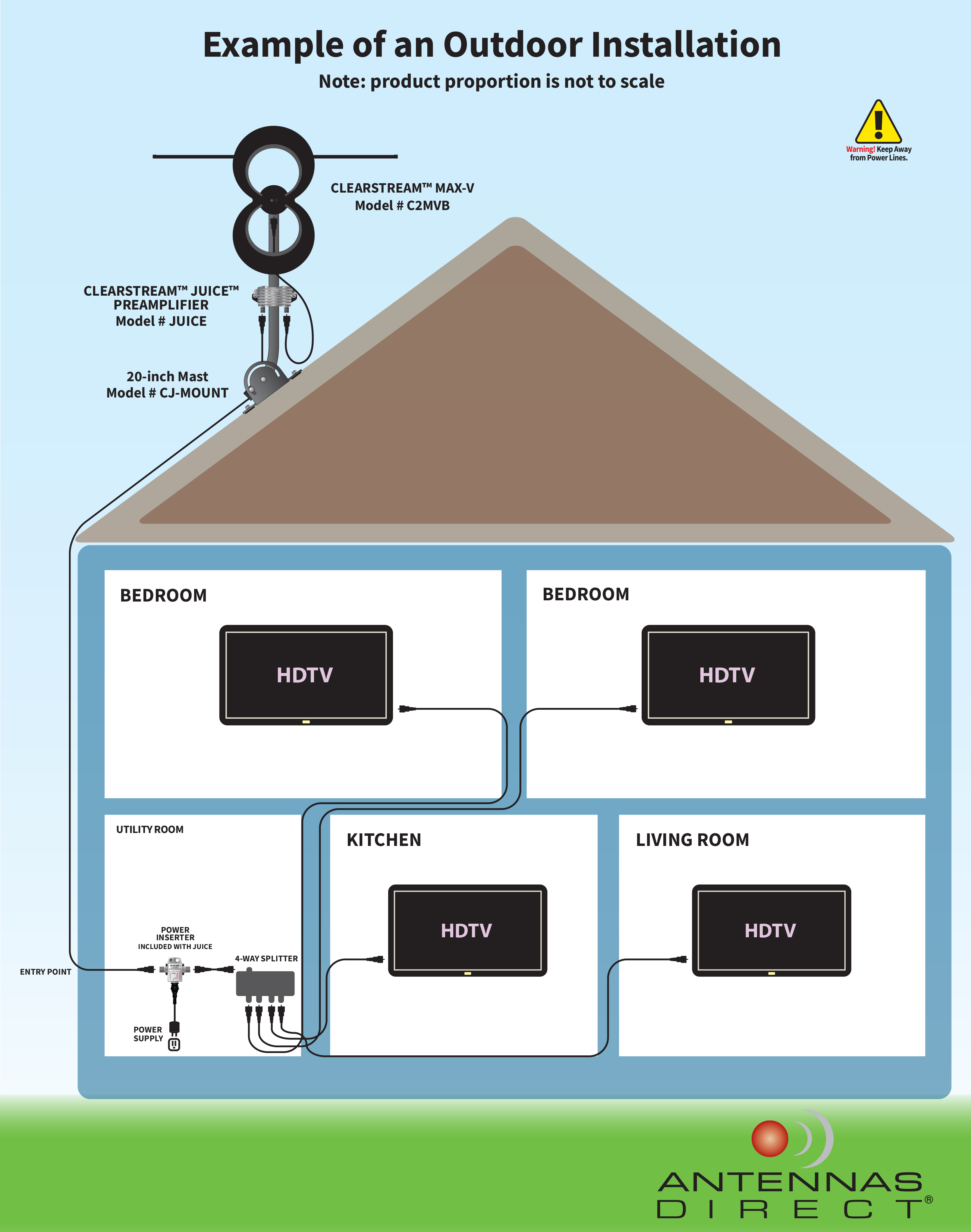
Credit: www.antennasdirect.com
Installing The Outdoor Antenna
Installing an outdoor antenna is a straightforward process. By following these steps, you can easily set up your antenna and enjoy improved signal strength for your TV or radio reception.
Installing the outdoor antenna is a crucial step in setting up your home entertainment system. With the right equipment and a few easy-to-follow steps, you’ll have a high-quality antenna that delivers crystal-clear reception in no time. In this guide, we will walk you through the process, starting with mounting the mast or bracket, attaching the antenna, connecting the coaxial cable, and performing grounding.Mount The Mast Or Bracket
Before you can attach the antenna, you need to mount the mast or bracket securely. To do this, follow these simple steps:- Choose a suitable location for the antenna, preferably on the rooftop or in an elevated area.
- Ensure there are no obstructions or buildings blocking the antenna’s line of sight to the transmission towers.
- Use a ladder to reach the chosen spot and position the mast or bracket securely.
- Fix the mast or bracket firmly using screws or bolts, ensuring it can withstand strong winds and weather conditions.
Attach The Antenna
Once the mast or bracket is securely mounted, it’s time to attach the antenna. Follow these steps to ensure a proper installation:- Align the antenna with the mast or bracket and secure it using the provided U-bolts or clamps.
- Tighten the U-bolts or clamps, ensuring the antenna is firmly attached and stable.
- Ensure the antenna is facing towards the transmission towers for optimal reception.
- Make sure the antenna is positioned at an appropriate height, typically a few feet above the roofline.
Connect The Coaxial Cable
Now that the antenna is securely attached, it’s time to connect the coaxial cable. Follow these steps to complete this essential step:- Locate the coaxial cable outlet on the antenna and remove any protective caps or coverings.
- Insert the coaxial cable connector into the outlet firmly, ensuring a tight connection.
- Route the coaxial cable from the antenna towards the desired location inside your home.
- Use cable clips or ties to secure the cable along the way, keeping it neat and organized.
Perform Grounding
Grounding the antenna is crucial for safety and optimal performance. Follow these steps to properly ground your outdoor antenna:- Locate a suitable grounding rod or grounding block near the outdoor antenna.
- Connect a copper grounding wire from the antenna to the grounding rod or block.
- Ensure a secure connection by using grounding clamps or connectors.
- Bury the grounding wire or enclose it in a protective conduit to prevent damage.
Testing And Adjusting The Antenna
Learn how to test and adjust your outdoor antenna for optimal signal reception. This step-by-step guide will help you install your antenna correctly and ensure excellent television reception.
Testing and adjusting the antenna is a crucial step in ensuring a seamless TV viewing experience. Once you have successfully installed your outdoor antenna, it’s time to make sure that you are receiving all the channels in your area. In this section, we will discuss the three important steps, Scan for Channels, Evaluate Signal Strength, and Fine-tune Antenna Positioning.Scan For Channels
To begin the testing process, you need to scan for channels. This step allows your TV to detect and store all the available channels in your area. Here’s a simple guide to help you with the scanning process:- Turn on your TV and go to the menu option.
- Look for the “Channel” or “Setup” option.
- Select “Auto Scan” or “Auto Programming”.
- Wait for your TV to scan for available channels.
- Once the scan is complete, your TV will display a list of all the channels it has found.
Evaluate Signal Strength
After scanning for channels, it’s essential to evaluate the signal strength of each channel. This step helps you identify weak signals and make necessary adjustments accordingly. Here’s how you can evaluate the signal strength:- Go to each channel that your TV has detected.
- Look for the signal strength or signal quality option in your TV’s menu.
- Choose a channel and check the signal strength percentage or bar graph.
- If the signal strength is weak, you might experience pixelated or interrupted reception.
- Move the antenna around and reevaluate the signal strength until you achieve the desired level.
- Repeat this process for all the channels.
Fine-tune Antenna Positioning
Once you have evaluated the signal strength of each channel, it’s time to fine-tune the positioning of your antenna. This step ensures that you get the best possible reception for all the channels. Here are a few tips to help you with the process:- Keep your TV on as you make adjustments to the antenna for real-time reception feedback.
- Start by adjusting the direction of the antenna slightly.
- Monitor the TV screen and look for any improvement in the picture quality or signal strength.
- If there is no improvement, try moving the antenna higher or lower.
- Continue making small adjustments until you achieve optimal reception.
- Note that outdoor antennas may pick up signals differently due to obstacles and interference.
- Consider experimenting with different positions to find the best placement for your antenna.
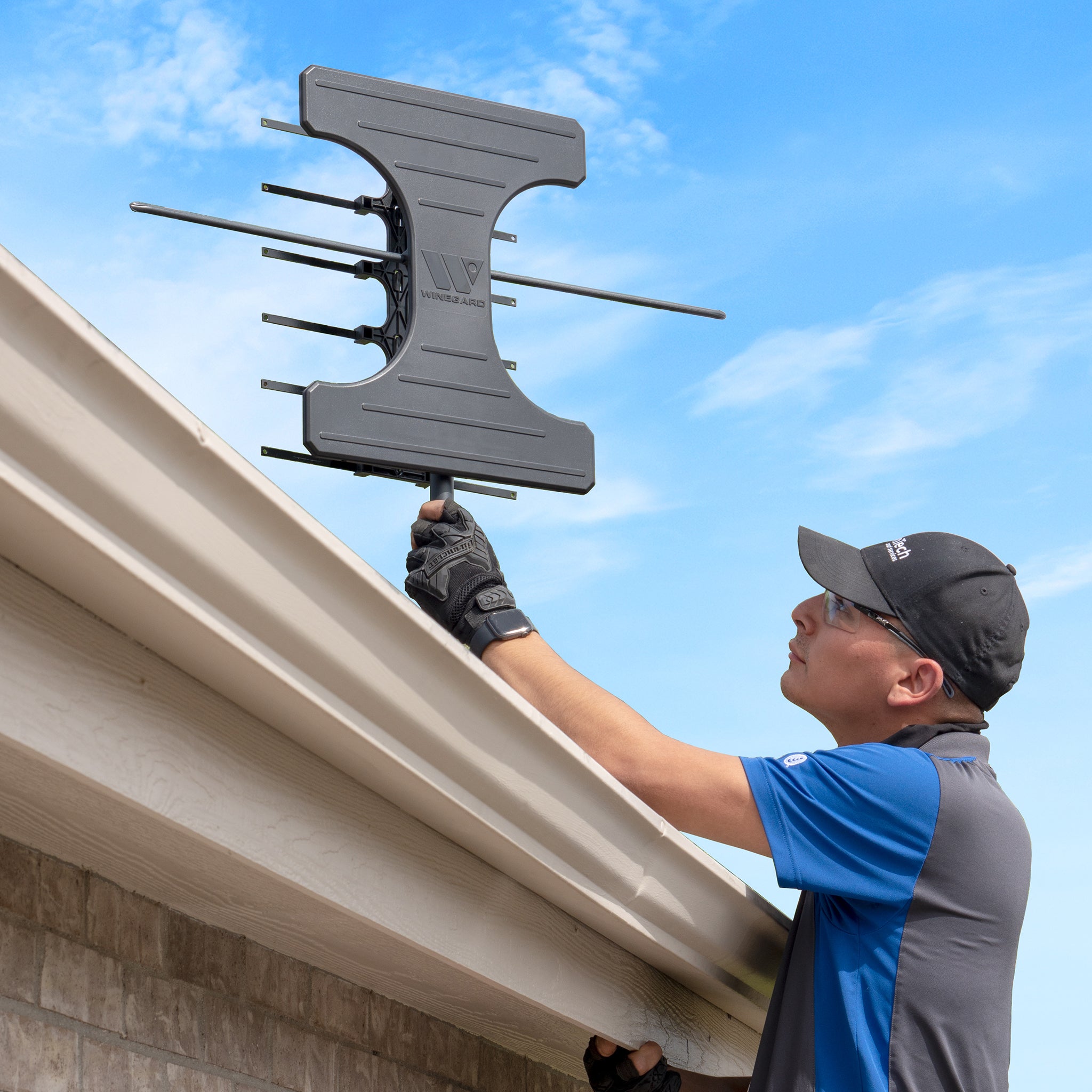
Credit: www.ontechsmartservices.com

Credit: www.youtube.com
Frequently Asked Questions Of How To Install An Outdoor Antenna
What Do I Need To Install An Outdoor Antenna?
To install an outdoor antenna, you will need the following: a suitable outdoor antenna, coaxial cable, mounting hardware (brackets, screws, etc. ), a mast or pole for mounting the antenna, a digital TV tuner or converter box, and a TV with a coaxial port.
Where Is The Best Place To Mount An Outdoor Tv Antenna?
The best place to mount an outdoor TV antenna is on the roof or in a high, open area. This allows for better reception and minimizes any obstructions that could interfere with the signal.
Can You Install A Tv Antenna Yourself?
Yes, you can certainly install a TV antenna on your own.
How Do I Connect An External Antenna To My Tv?
To connect an external antenna to your TV, first, locate the antenna input on your TV, usually labeled as “Antenna In” or “RF In. ” Then, simply plug the antenna cable into the antenna input. Next, perform a channel scan using your TV’s menu or settings to tune in to available channels.
Conclusion
To summarize, installing an outdoor antenna can greatly enhance your television viewing experience. By following the step-by-step guide provided in this blog post, you can ensure a smooth and successful installation process. By choosing the right antenna, positioning it correctly, and connecting it to your television, you can enjoy a wide range of channels and crisp HD picture quality.
Don’t miss out on the benefits of an outdoor antenna – give it a try and elevate your TV entertainment today!
- Unleash the Potential: Exploring the World of Ceiling TV Mounts - February 15, 2024
- How to Mount a Tv on a Swivel Stand - February 15, 2024
- How to Hang Tv Outside - February 14, 2024
